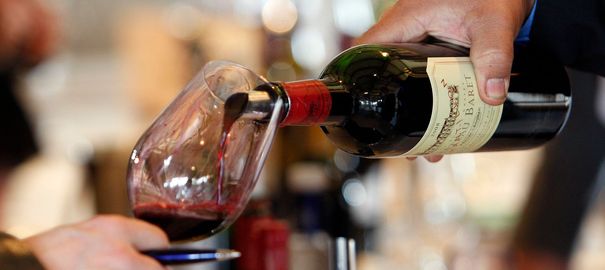 Peter Shakeshaft is the founder and CEO of Vin-X, a market-leading specialist in fine wine investment. A qualified corporate financier, Peter’s career spans twenty years in the Financial Services industry where he founded and led a group which grew sales to over £100million.
Peter Shakeshaft is the founder and CEO of Vin-X, a market-leading specialist in fine wine investment. A qualified corporate financier, Peter’s career spans twenty years in the Financial Services industry where he founded and led a group which grew sales to over £100million.
Having observed the value of fine wine as a private collector, Peter founded Vin-X in March 2010. He assembled a team with experience in financial markets and the wine industry, which provides a client-focused service creating profitable portfolios of the finest wines in the world.
A regular spokesman and commentator on the fine wine sector, Peter has featured on mainstream media including BBC Radio channels, Bloomberg and CNBC, in national and trade press and on news websites such as The Huffington Post.
1. Why should people invest in fine wine?
Fine wine is recognized by wealth managers and investors as an alternative asset which provides a low-risk, stable, tax efficient investment with the potential to hedge inflation and currency movements. In the long term, fine wine outperforms other assets and its performance does not directly correlate with more volatile financial markets and can be used to enhance a rounded investment portfolio.
A survey undertaken by Barclays in 2012 reported that 25 per cent of the high net worth individuals reviewed owned fine wine and that represented an approximate 2 per cent of their wealth. The Knight Frank Wealth Report 2014 stated that fine wine is one of the most popular “passion investments” and that globally there has been a 34 per cent increase in the number of high net worth individuals investing in wine.
With that kind of data we believe every investor should own a case of fine wine.
2. Do you find a certain type of person chooses to take part into wine investment?
There is no single type of person that invests in fine wine. It is our job to make sure that we understand every client’s personal requirements in terms of the budget to invest, the aspirations for that investment and the time frame to exit and to match them with the best wines in the market. Certainly some of our clients are passionate and knowledgeable about fine wine, but the majority view it as a valuable, tax-efficient commodity with the potential to make a good medium to long-term returns.
3. What influences the market and the price of wine? Are critic scores an important factor?
There are a number of factors which influence the market and in summary these include the following:
Supply and Demand – there are very few producers of investment-grade wine in the world from a small number of key regions. Each chateau or winery produces a finite number of cases of wine per vintage. For example First Growth Chateau Lafite Rothschild makes on average 15,000 cases per year and this is one of the larger fine wine producers. It’s not like equities where a company may issue more shares. Once the wines reach their drinking windows consumption makes these wines even rarer and their value rises proportionately.
Brand– There are certain producers that have a significant status and influence on the market. For example the five First Growths of Bordeaux; Mouton Rothschild, Margaux, Lafite Rothschild, Latour and Haut Brion are considered to be luxury brands in their own right commanding global demand and premium values. The movement in prices of these wines can influence the whole market.
Climate – Growing conditions will affect the quality and volume of wine available every vintage. Bordeaux now has such stringent quality control in the making of its fine wine that it is rare that the top wines still do not achieve excellent scores but certainly this is a determining factor.
Critics – The professional wine critics are very influential and a few have the ability to move the prices in fine wine when they publish their scores following tastings. The industry’s most notable critic in recent times is American, ex-lawyer Robert Parker Jnr and his scoring system is used by the industry to rank the quality of wines.
Price transparency – The advent of the industry’s exchange function, Liv-ex in the late 1990’s transformed the market bringing greater visibility on pricing and improved liquidity.
4. How much is the minimum amount to invest in fine wines?
Given the fact that you can expect to acquire a case of investment-grade wine from as little as £3,000 and, ideally, it would be sensible to create a portfolio constructed to suit budget and goals, we advise that a starting position would be to expect to invest at least £10,000.
5. How is this sector doing in 2014?
Founder and Director of Liv-ex, James Miles reviewed the market at the International Wine & Spirits Fair in Hong Kong on the 6th November 2014. He observed, in a presentation to the trade, that in pretty much every decade investors saw significant returns and yet natural market dynamics meant there were also notable declines. The most recent example of this saw First Growth values rise 4.5 times between 2005 and 2011 to then fall by 41 per cent in the most recent, and current dip, between 2011 and 2014.
Today, trade on Liv-ex in Bordeaux is at its lowest percentage in a decade, with Burgundy premium brand Domaine Romanee Conti benefiting. But such is the strength of Bordeaux that even this reduced market share is in excess of 70 percent. It’s a Buyers Market for en primeur and young Bordeaux wines, but Miles states that Bordeaux wines are now offering serious value with prices at the lowest point since the 1970s.
Diversification into wines of other regions such as Champagne, Rhone and Tuscany, witnessed in the market over the past few years, have broadened investor focus and helped minimize the potential exposure to market movements.
Miles view concurs with ours, that the current Bordeaux prices represent a good stage to enter the market.
This guest post complies with my Disclosure Policy.
Found this useful wondering how you can show me your appreciation? Well, there are some ways you can say thanks and support my website: ➡
